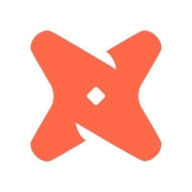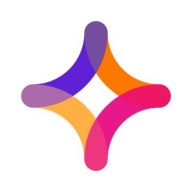

Jitterbit Harmony and dbt compete in data integration and transformation processes. Jitterbit Harmony gains an advantage with its integration capabilities and supportive customer service, while dbt is favored for its advanced data transformation features.
Features: Jitterbit Harmony provides comprehensive integration capabilities, rich automation resources, and streamlined workflows. dbt offers robust transformation options, in-depth analytics capabilities, and enhanced data modeling. Jitterbit Harmony focuses on seamless integration, whereas dbt emphasizes powerful transformation.
Ease of Deployment and Customer Service: Jitterbit Harmony has an easy deployment model with extensive support that simplifies integration. dbt's deployment is more complex, requiring technical expertise, but it offers detailed documentation and community support. Jitterbit Harmony emphasizes user support, whereas dbt relies on community-driven assistance.
Pricing and ROI: Jitterbit Harmony's pricing is cost-effective, offering a strong ROI with its integration capabilities and supportive infrastructure. dbt involves higher initial costs but delivers good ROI where deep data transformation is necessary, due to its advanced features. Customers find Jitterbit Harmony affordable, while dbt's higher investment is justified by transformation efficiency.


dbt is a transformational tool that empowers data teams to quickly build trusted data models, providing a shared language for analysts and engineering teams. Its flexibility and robust feature set make it a popular choice for modern data teams seeking efficiency.
Designed to integrate seamlessly with the data warehouse, dbt enables analytics engineers to transform raw data into reliable datasets for analysis. Its SQL-centric approach reduces the learning curve for users familiar with it, allowing powerful transformations and data modeling without needing a custom backend. While widely beneficial, dbt could improve in areas like version management and support for complex transformations out of the box.
What are the most valuable features of dbt?In the finance industry, dbt helps in cleansing and preparing transactional data for analysis, leading to more accurate financial reporting. In e-commerce, it empowers teams to rapidly integrate and analyze customer behavior data, optimizing marketing strategies and improving user experience.
Jitterbit Harmony is a comprehensive platform for data integration and API management, enabling seamless synchronization and automation across cloud-based and on-premises applications.
Users leverage Jitterbit Harmony to integrate systems like ERP and CRM applications, simplifying complex data workflows and enhancing automation. It supports efficient data migration and ensures smooth connectivity, handling diverse integration needs and helping streamline business processes. Users emphasize its drag-and-drop functionality and extensive templates, which contribute to its robust performance. However, improvements are needed in data mapping, error message clarity, and documentation, especially when dealing with large data volumes.
What are the key features of Jitterbit Harmony?Companies across retail, manufacturing, healthcare, and finance sectors use Jitterbit Harmony to integrate critical applications and automate workflows. In retail, it connects inventory systems with sales platforms, reducing manual effort. Manufacturers sync their ERP systems with supply chain software, optimizing operations. Healthcare organizations integrate patient management systems with insurance databases, streamlining patient care. Financial institutions use it to connect accounting software with banking systems, ensuring real-time financial data exchange.
We monitor all Data Integration reviews to prevent fraudulent reviews and keep review quality high. We do not post reviews by company employees or direct competitors. We validate each review for authenticity via cross-reference with LinkedIn, and personal follow-up with the reviewer when necessary.